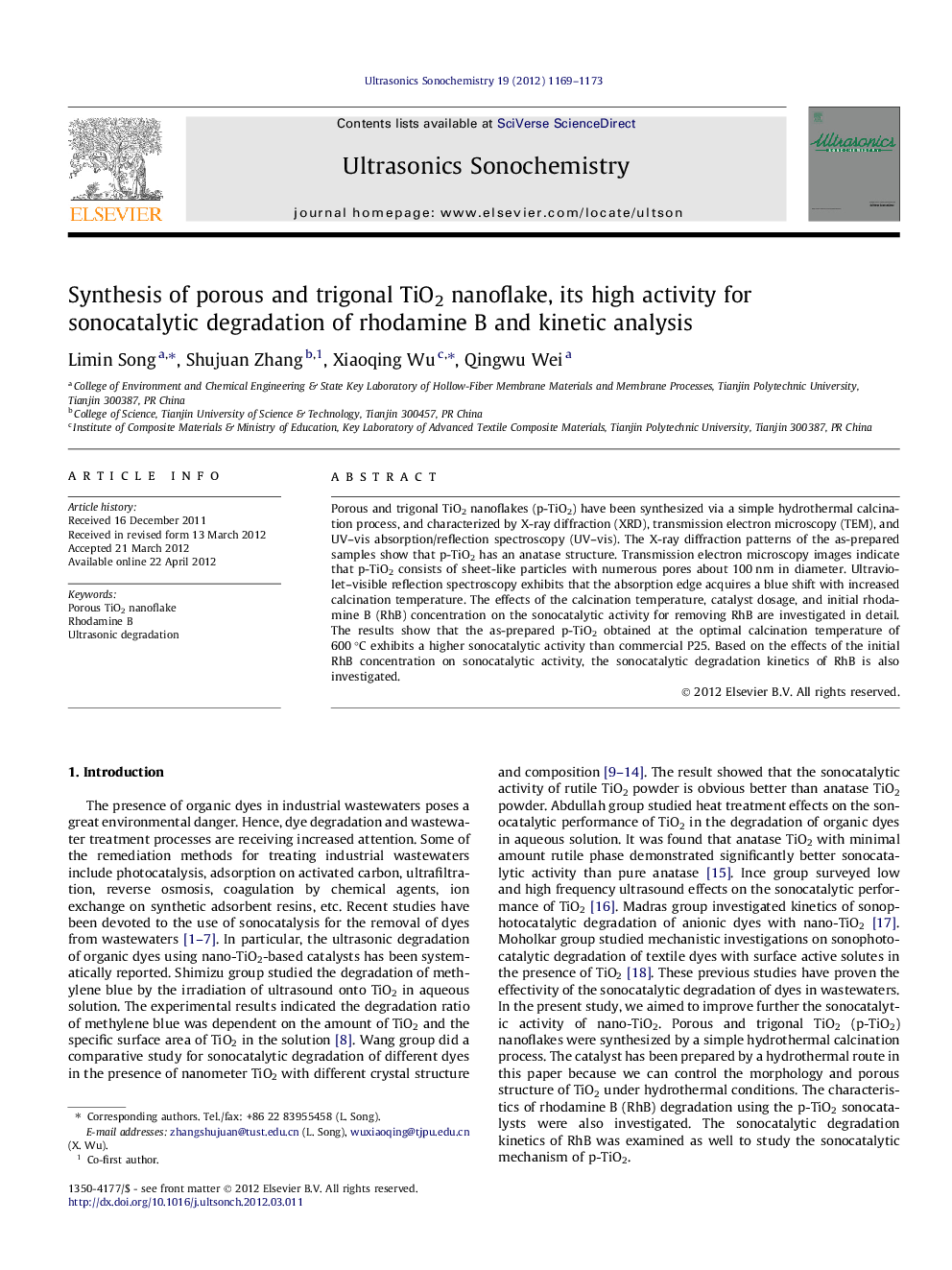| Article ID | Journal | Published Year | Pages | File Type |
|---|---|---|---|---|
| 1266869 | Ultrasonics Sonochemistry | 2012 | 5 Pages |
Porous and trigonal TiO2 nanoflakes (p-TiO2) have been synthesized via a simple hydrothermal calcination process, and characterized by X-ray diffraction (XRD), transmission electron microscopy (TEM), and UV–vis absorption/reflection spectroscopy (UV–vis). The X-ray diffraction patterns of the as-prepared samples show that p-TiO2 has an anatase structure. Transmission electron microscopy images indicate that p-TiO2 consists of sheet-like particles with numerous pores about 100 nm in diameter. Ultraviolet–visible reflection spectroscopy exhibits that the absorption edge acquires a blue shift with increased calcination temperature. The effects of the calcination temperature, catalyst dosage, and initial rhodamine B (RhB) concentration on the sonocatalytic activity for removing RhB are investigated in detail. The results show that the as-prepared p-TiO2 obtained at the optimal calcination temperature of 600 °C exhibits a higher sonocatalytic activity than commercial P25. Based on the effects of the initial RhB concentration on sonocatalytic activity, the sonocatalytic degradation kinetics of RhB is also investigated.
► Porous TiO2 nanoflakes have been synthesized by a simple process. ► The porous TiO2 nanoflakes possess relatively better sonocatalytic activity. ► RhB degradation on porous TiO2 can be described by Langmuir–Hinshelwood model.
